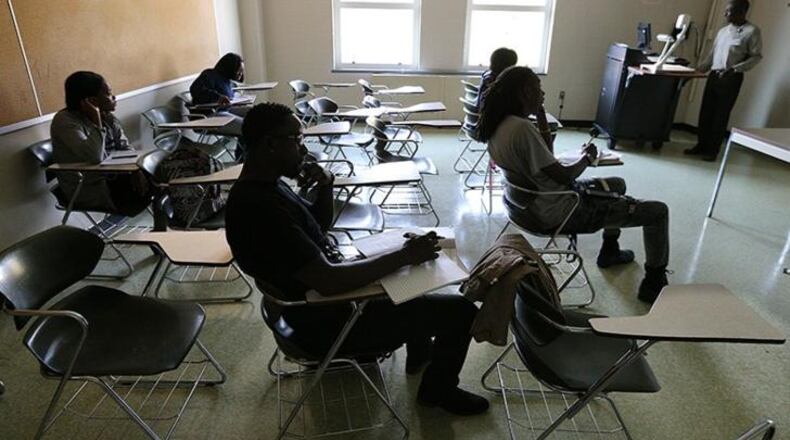As another class of seniors get ready to finish high school amid the lingering presence of COVID-19, data paints a troubling picture about their futures.
A dramatic decline in college-going rates means freshman enrollment has dropped by 13% since 2019, according to the National Student Clearinghouse Research Center. Freshman enrollment in community colleges shows an even steeper drop-off, falling 21%.
The statistics are far worse for low-income students. Enrollment among graduates from high-poverty high schools was 28 percentage points lower than low-poverty high schools. Even when low-income students enroll in postsecondary education, they are less likely to return for their second year.
Access to postsecondary education is one of the most effective ways to address inequality and create economic opportunity. The vast majority of good-paying jobs require education beyond high school. Students who do not get some education or training beyond high school now are likely to earn far less and be at much greater risk of unemployment throughout their lives.
Credit: contributed
Credit: contributed
As the co-chairs of a national working group of state and local elected officials convened by the NewDEAL Forum and All4Ed, we have spent the last two years focused on how to prepare all students for today’s high-skill, high-wage jobs. Policymakers engaged in our group had hoped that the President’s proposal for free community college would be approved as part of the Build Back Better agenda. Unfortunately, that proposal has been dropped, and the Build Back Better Act is stalled in Congress.
Credit: contributed
Credit: contributed
This is no reason to despair about fulfilling the nation’s vital mission to tear down the barriers preventing students from earning, at minimum, an associate’s degree. Rather than waiting for Congress to act, states and localities must seize this moment created by an influx in federal funding from the American Rescue Plan signed by President Biden last March.
Our colleagues across the country must act now to replicate the work of innovative state and local policymakers who have proven that we can give students a jump start on earning a year, or more, of college credit before they graduate high school. The most effective of these programs, which are often called “dual credit” because students earn both high school and college credit, make equity a central pillar, recognizing that students who traditionally have the least access would benefit the most.
- In Oakland, California, the city has done just that with the Oakland Promise, a partnership between city government and the Oakland City School District. Oakland has created five specialized College and Career Pathways academies aligned to key industries: environmental science, innovative design and engineering, law and social justice, public health and the arts. Studies show students enrolled in these academies are more likely to graduate from high school and to enroll in college. For example, participants in the Linked Learning Health Pathways Project were 20 percentage points more likely to enroll in college than traditional high school students. Governor Gavin Newsom is requesting $1.5 billion to expand college and career pathways across the state.
- Indiana’s College Core program has seen similar success by allowing a student who completes the College Core to transfer that coursework to any public institution of higher education in Indiana as a block of 30 credit hours. High schoolers enrolled in dual credit through College Core went to and persisted in college at more than 1.5 times the rate of those who did not. Indiana estimates that this program saves the state and students approximately $80 million in higher education costs.
- An Illinois model offers students a chance to earn a College and Career Pathway Endorsement on their diplomas. Candidates develop a detailed individual plan spelling out everything from salary goals to postsecondary education required and can earn at least six hours of early college credit.
- A robust dual enrollment program in Georgia serves over 30,000 students annually. State Sen. Parent has further pursued legislation to require the state to report on its accessibility for underserved youth – something all states can do.
Investments in programs like these are vital to ensuring a better future for our young people. An analysis of the cost-to-benefit ratio of early college from the American Institutes for Research found $15 return on investment for every dollar invested in early college.
Even if free community college is not on the federal agenda this year, we need to keep our focus on expanding educational opportunities for all students. Through our working group, policymakers will continue to collaborate and share best practices for giving every student the chance to earn two years’ worth of college credit along with their high school diplomas.
These efforts can truly help us Build Back Better.
Elena Parent is a Democratic leader in Georgia’s Senate and a member of the Education Committee.
Steven L. Reed is the mayor of Montgomery, Alabama.
About the Author
Keep Reading
The Latest
Featured



